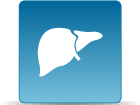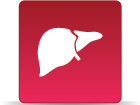Hexachlorobenzene
CASRN 118-74-1 | DTXSID2020682
- IRIS Summary (PDF) (16 pp, 129 K)
On this page:
Noncancer Assessment
Reference Dose for Oral Exposure (RfD) (PDF) (16 pp, 129 K) Last Updated: 09/26/1988
| System | RfD (mg/kg-day) | Basis | PoD | Composite UF | Confidence |
|---|---|---|---|---|---|
| Hepatic | 8 x 10 -4 | Liver effects |
NOAEL
:
8
x 10-2
mg/kg-day |
100 | Medium |
Reference Concentration for Inhalation Exposure (RfC) (PDF) (16 pp, 129 K) Last Updated: 03/01/1991
Information reviewed but value not estimated.
Cancer Assessment
Weight of Evidence for Cancer (PDF)
(16 pp, 129 K)
Last Updated: 03/01/1991
| WOE Characterization | Framework for WOE Characterization |
|---|---|
| B2 (Probable human carcinogen - based on sufficient evidence of carcinogenicity in animals) | Guidelines for Carcinogen Risk Assessment (U.S. EPA, 1986) |
- Hexachlorobenzene, when administered orally, has been shown to induce tumors in the liver, thyroid and kidney in three rodent species.
- This may be a synopsis of the full weight-of-evidence narrative.
Quantitative Estimate of Carcinogenic Risk from Oral Exposure (PDF) (16 pp, 129 K)
Oral Slope Factor:
1.6
per mg/kg-day
Drinking Water Unit Risk:
4.6
x 10-5
per µg/L
Extrapolation Method: Linearized multistage, extra risk
Tumor site(s): Hepatic
Tumor type(s): Hepatocellular carcinoma (Erturk et al., 1986)
Quantitative Estimate of Carcinogenic Risk from Inhalation Exposure (PDF) (16 pp, 129 K)
Inhalation Unit Risk:
4.6
x 10-4
per µg/m3
Extrapolation Method: Linearized multistage, extra risk
Tumor site(s): Hepatic
Tumor type(s): Hepatocellular carcinoma (Erturk et al., 1986)
Other EPA Information
- Human Health Benchmarks for Pesticides (HHBP). This database provides human health benchmarks for pesticides that may be present in drinking water.
- Office of Pesticide Programs Pesticide Chemical Search. This database provides links to health effects information and registration status for pesticides.
- Chemistry Dashboard. This database provides information on chemical structures, experimental and predicted physicochemical, and toxicity data.
Critical Effects
Tumor Sites
Chemical Structure

Synonyms
- Granox
- Hexachlorobenzene
- Pentachlorophenyl chloride
- Perchlorobenzene
- 118-74-1


